
Black Carbon
Black Carbon
Black Carbon (BC), with an atmospheric lifetime of a few days to weeks, is a potent short-lived climate pollutant due to its strong light absorption and radiative forcing. It contributes to atmospheric warming and accelerates cryospheric melting when deposited on snow and ice.
Mitigating BC emissions offers immediate climate and public health benefits.



Black Carbon Emissions
In 2018, India’s black carbon emissions reached 1,480 Gg/year, reflecting a 32% increase from 2011 levels (1,116 Gg/year). Sectoral contributions were as follows:
- Transport: 673 Gg/year (46%)
- Residential: 387 Gg/year (26%)
- Other sectors: 239 Gg/year (16%)
- Industry: 161 Gg/year (11%)
- Thermal power plants: 19 Gg/year (1%)
During this period, the transport sector showed the highest growth, while the residential sector remained the lowest. The rise in emissions is largely driven by the surge in registered vehicles, especially in urban and megacity areas compared to rural regions.
In India, Uttar Pradesh was the largest contributor to black carbon emissions, accounting for 175 Gg/year of the national total. Key sources of black carbon in the state include transport, biofuel combustion, and industrial activities.
Other significant contributing states are West Bengal, Haryana, Bihar, Punjab, Delhi-NCR, and Himachal Pradesh.
Black Carbon Emissions and Concentration
Category wise Black Carbon emissions
Key Contributors to Black carbon Emissions


Transport
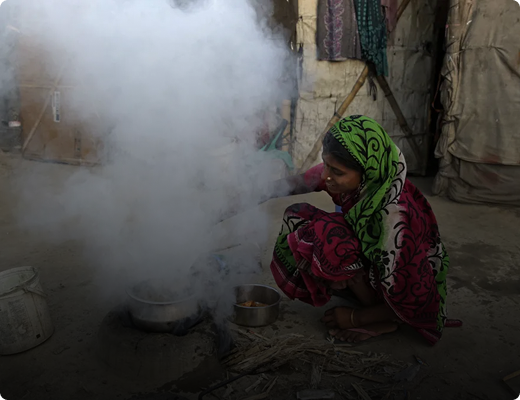

Residential Sector


Industrial Sector


Thermal Power Plants


Forest Fire


Municipal Solid Waste Burning


Others
Mitigation Measures
Mitigating black carbon requires targeted action across sectors such as transport, energy, agriculture, and industry. These measures reduce emissions from incomplete combustion and promote cleaner, more sustainable practices.
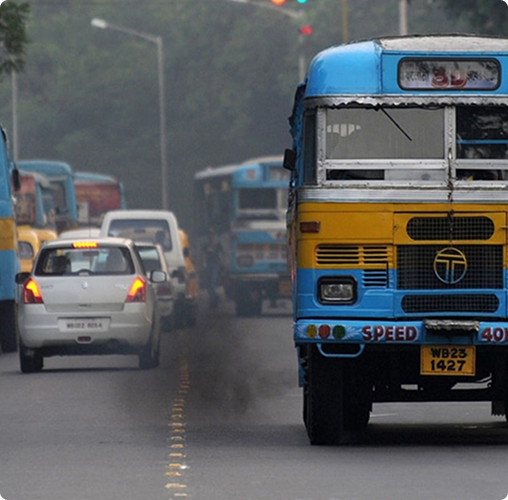
Transport
Accelerating electrification, promoting clean fuels, and retrofitting vehicles across road, water, and residential sectors can significantly reduce black carbon emissions and improve air quality.
Road Transport:
 Electrification of two-wheelers, light motor vehicles (LMVs), and heavy motor vehicles (HMVs)
Electrification of two-wheelers, light motor vehicles (LMVs), and heavy motor vehicles (HMVs)  Reducing black carbon (BC) emissions through the incorporation of biofuel alternatives like biodiesel, which in turn are sourced sustainably from recycling, oil waste etc.
Reducing black carbon (BC) emissions through the incorporation of biofuel alternatives like biodiesel, which in turn are sourced sustainably from recycling, oil waste etc. Emphasis on public transportation and accelerating its electrification.
Emphasis on public transportation and accelerating its electrification. Upgrading diesel engines with technologies such as diesel particulate filters (DPF) or diesel oxidation catalysts in the exhaust system for cleaner emissions.
Upgrading diesel engines with technologies such as diesel particulate filters (DPF) or diesel oxidation catalysts in the exhaust system for cleaner emissions. Expanding the use of diesel retrofit solutions like diesel particulate filters, diesel oxidation catalysts, closed crankcase ventilation systems, and selective catalytic reduction systems to reduce emissions.
Expanding the use of diesel retrofit solutions like diesel particulate filters, diesel oxidation catalysts, closed crankcase ventilation systems, and selective catalytic reduction systems to reduce emissions. Demonstrations of smart transport grids and information and communication technology applications for soft-service travel demand management.
Demonstrations of smart transport grids and information and communication technology applications for soft-service travel demand management. Stringent vehicle emission and fuel quality standards.
Stringent vehicle emission and fuel quality standards. Phasing-out old vehicles.
Phasing-out old vehicles.
Waterways (Fishing, Boats and Ships)
 Retrofitting the existing boats with pollution control equipments.
Retrofitting the existing boats with pollution control equipments. Electrification of the fleet.
Electrification of the fleet.
Residential Fuel Usage
 Promotion of LPG and solar energy in rural and urban slum dwellings
Promotion of LPG and solar energy in rural and urban slum dwellings Expanding household electrification in rural and urban slum areas.
Expanding household electrification in rural and urban slum areas.
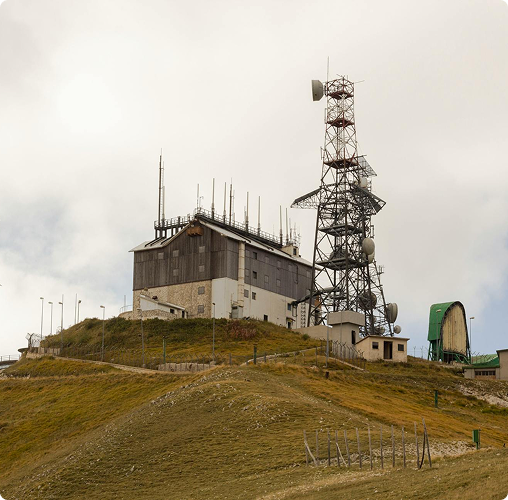
Electricity
Reducing reliance on coal and diesel through pollution control, renewable energy, and clean power alternatives can lower emissions and expand access to sustainable electricity.
Coal Fired Power Plants
 Implementing air pollution control measures in existing fossil fuel-based thermal power plants (TPPs)
Implementing air pollution control measures in existing fossil fuel-based thermal power plants (TPPs) Emphasis on renewable energy including solar, wind, and hydro power
Emphasis on renewable energy including solar, wind, and hydro power
Diesel Generators (Residential, Commercial, Mobile Towers, Industrial)
 Scheduled power outage for efficient energy management
Scheduled power outage for efficient energy management Enhanced electrification of remote villages.
Enhanced electrification of remote villages. Stand-alone power generations systems for mobile towers and remote villages
Stand-alone power generations systems for mobile towers and remote villages Deployment of mini-grids powered by cleaner fuels
Deployment of mini-grids powered by cleaner fuels

Industrial fuel usage
Improving energy efficiency, adopting clean fuels, and implementing emission controls in industries can significantly reduce pollution and optimize fuel usage.
 Avoid leakage of heat/energy for example through appropriate insulation
Avoid leakage of heat/energy for example through appropriate insulation Encourage pollution control and abatement measures
Encourage pollution control and abatement measures Promote use of clean fuels in industries
Promote use of clean fuels in industries Replace conventional fuels with refuse-derived fuels for energy needs, along with emission reduction measures
Replace conventional fuels with refuse-derived fuels for energy needs, along with emission reduction measures Enhance efficiency through equipment upgrades, repairs, and regular maintenance
Enhance efficiency through equipment upgrades, repairs, and regular maintenance Adopt Energy efficiency practices in Industrial clusters including enhaced heat and waste recovery
Adopt Energy efficiency practices in Industrial clusters including enhaced heat and waste recovery

Food Enterprises
Promoting clean fuels and energy-efficient practices in the food enterprises sector can reduce emissions and support healthier, more sustainable commercial operations.
 Encourage energy-efficient cooking and heating appliances in commercial kitchens to reduce fuel consumption and emissions.
Encourage energy-efficient cooking and heating appliances in commercial kitchens to reduce fuel consumption and emissions. Promote training and awareness programs for small food businesses on clean energy adoption and compliance with pollution control norms.
Promote training and awareness programs for small food businesses on clean energy adoption and compliance with pollution control norms.
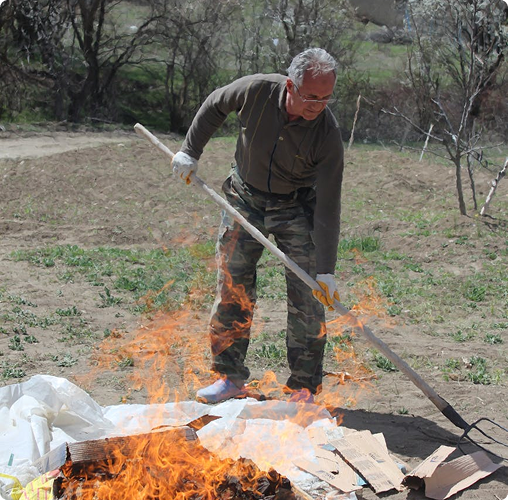
Biomass Burning
Adopting sustainable crop residue management and fire monitoring systems can reduce black carbon emissions while improving soil health and air quality.
 Encourage stubble management practices, such as in-field tillage and decomposition
Encourage stubble management practices, such as in-field tillage and decomposition Implement controlled burns with seasonal and weather-based restrictions to minimize climate impact
Implement controlled burns with seasonal and weather-based restrictions to minimize climate impact Incentivize the utilization of agricultural waste
Incentivize the utilization of agricultural waste Promote alternative uses of crop residues, including as biomass fuel, biochar as soil amendment, and building materials
Promote alternative uses of crop residues, including as biomass fuel, biochar as soil amendment, and building materials Establish strategic watch stations for fire monitoring
Establish strategic watch stations for fire monitoring Establish advanced technologies such as sensors and satellite imagery based forest fire monitoring and early warning
Establish advanced technologies such as sensors and satellite imagery based forest fire monitoring and early warning Strengthened fire preparedness with stocked equipment, rapid response teams, aerial suppression, real-time monitoring, and community training for effective wildfire and agricultural fire management.
Strengthened fire preparedness with stocked equipment, rapid response teams, aerial suppression, real-time monitoring, and community training for effective wildfire and agricultural fire management.
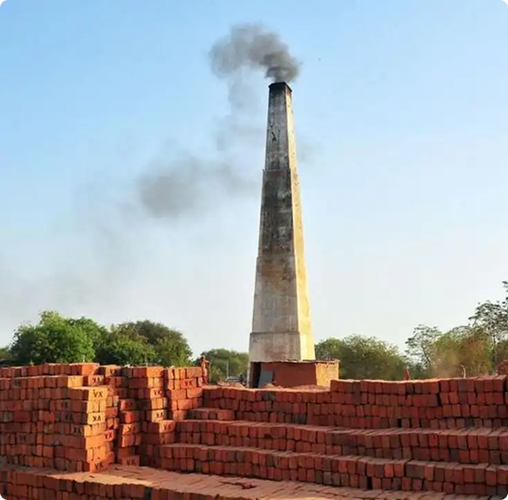
Brick Kiln
Modernizing brick kiln operations through cleaner fuels and efficient technologies can cut emissions, improve air quality, and support sustainable construction practices.
 Transition from bull-trench to zig-zag kiln technology for improved efficiency
Transition from bull-trench to zig-zag kiln technology for improved efficiency Shift from coal and biomass to gas for energy needs, along with in cooperation pollution control measures
Shift from coal and biomass to gas for energy needs, along with in cooperation pollution control measures Incorporate gravity-settling chambers into the bull-trench kiln fixed chimney design
Incorporate gravity-settling chambers into the bull-trench kiln fixed chimney design Implement controlled burns with seasonal and weather-based restrictions to minimize climate impact
Implement controlled burns with seasonal and weather-based restrictions to minimize climate impact Produce hollow bricks and introduce flyash in the brick material
Produce hollow bricks and introduce flyash in the brick material

Solid Waste Disposal
Efficient solid waste management through segregation and repurposing can reduce emissions and promote the use of waste as a clean energy resource.
 Source segregation and repurposing of dry waste
Source segregation and repurposing of dry waste Sorting and baling of dry waste for use as refuse-derived fuel in waste-to-energy applications
Sorting and baling of dry waste for use as refuse-derived fuel in waste-to-energy applications

Crematorium
Encouraging electric cremation and cleaner alternatives can significantly reduce emissions from traditional biomass-based cremation methods.
 Subsidize electric and LPG-based cremation infrastructure to increase adoption in both urban and rural areas.
Subsidize electric and LPG-based cremation infrastructure to increase adoption in both urban and rural areas. Raise public awareness on the environmental impact of traditional cremation and promote eco-friendly alternatives through community engagement.
Raise public awareness on the environmental impact of traditional cremation and promote eco-friendly alternatives through community engagement. Recomposing human bodies to soil.
Recomposing human bodies to soil.
Benefits
Climate Benefits
Reducing black carbon can help cool the atmosphere, protect glaciers, and stabilize rainfall patterns. Its mitigation supports both climate resilience and cryosphere preservation.
Reduction in Radiative Forcing:
BC contributes to atmospheric heating by absorbing solar radiation. Studies suggest that reducing BC emissions could lower global mean temperatures by up to 0.02°C by 2030 (Shindell et al., 2018).
Preservation of Snow and Ice (Cryosphere):
BC deposition on snow and ice reduces albedo, accelerating ice and glacier melt in the Arctic and Himalayas. Targeted mitigation can slow these melting processes, preserving critical cryospheric environments (Bond et al., 2019).
Atmospheric Stability and Precipitation Patterns:
BC alters atmospheric thermodynamics, affecting cloud cover and precipitation patterns, particularly in monsoon-dependent regions (Wang et al., 2020).

Health Benefits
Mitigating black carbon can prevent millions of premature deaths, reduce healthcare costs, and significantly improve indoor air quality—especially in vulnerable communities.
Reduction in Premature Mortality:
BC is a major component of PM₂.₅ , exposure to which is linked to cardiovascular and respiratory diseases. Reducing BC emissions could prevent between 4 to 12 million premature deaths globally by 2030 (Lelieveld et al., 2019).
Lower Healthcare Costs:
A shift to clean energy and reduced BC exposure could lead to significant economic savings in healthcare expenditures. In the U.S. alone, air pollution mitigation is projected to yield health-related savings of $65–128 billion annually by 2035 (Maji et al., 2021).
Improved Indoor Air Quality:
Household air pollution from solid fuel combustion is a major source of BC exposure, particularly in developing nations. Cleaner cookstoves and alternative fuels can reduce indoor PM₂.₅ levels by 40–60% (Ramanathan & Carmichael, 2019).

Environmental Benefits
Reducing black carbon improves air quality, supports crop productivity, and limits ozone formation—benefiting both ecosystems and human health.
Improvement in Air Quality and Public Health:
BC mitigation leads to lower ambient PM₂.₅ concentrations, improving urban and rural air quality and reducing associated respiratory illnesses (Crippa et al., 2020).
Protection of Agricultural Productivity:
BC contributes to atmospheric dimming, reducing the amount of sunlight reaching crops and lowering yields. Studies show that reducing BC emissions could improve food production by 5–10% in South Asia (Burney & Ramanathan, 2020).
Reduction in Tropospheric Ozone Formation:
BC co-emissions with NOₓ and VOCs contribute to ground-level ozone formation, which harms both human health and ecosystems (Fuglestvedt et al., 2018).

Socioeconomic Benefits
Black carbon mitigation drives clean tech adoption and strengthens climate–air quality policy alignment, delivering high-impact, cost-effective benefits.
Encouragement of Clean Technologies:
BC mitigation policies drive technological advancements in diesel particulate filters, renewable energy adoption, and industrial emission controls (Bond et al., 2019).
Policy Synergies for Climate and Air Quality:
Integrating BC reduction strategies with broader climate policies enhances their effectiveness, leading to cost-effective, multi-benefit solutions (Shindell et al., 2018).

